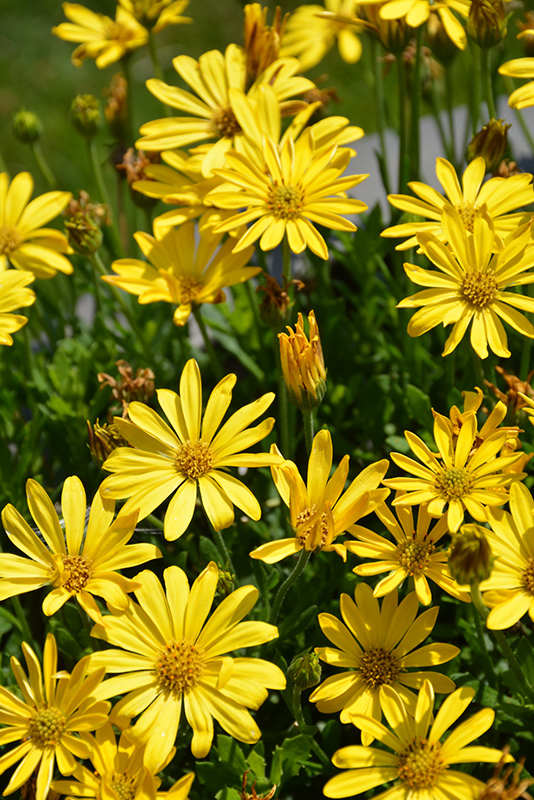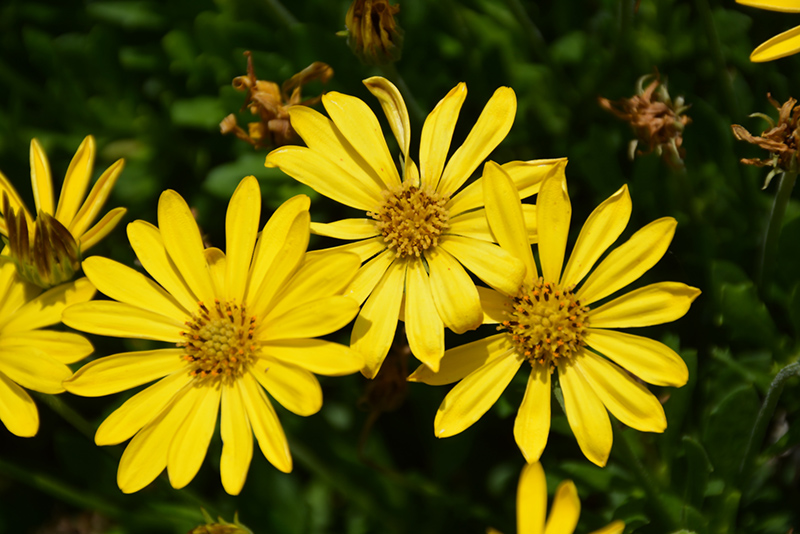Plant Finder
Bright Lights™ Yellow African Daisy
Osteospermum 'Bright Lights Yellow'
Plant Height: 8 inches
Flower Height: 12 inches
Spacing: 8 inches
Sunlight:
![]()
![]()
Hardiness Zone: (annual)
Group/Class: Bright Lights Series
Brand: Proven Winners
Description:
A gorgeous selection, producing bright sunny yellow flowers with golden centers; nicely mounded habit supports flowers for an excellent display; long blooming and heat tolerant
Ornamental Features
Bright Lights™ Yellow African Daisy is clothed in stunning yellow daisy flowers with gold eyes at the ends of the stems from late spring to mid fall. The flowers are excellent for cutting. Its spiny narrow leaves remain green in color throughout the season.
Landscape Attributes
Bright Lights™ Yellow African Daisy is an herbaceous annual with a mounded form. Its medium texture blends into the garden, but can always be balanced by a couple of finer or coarser plants for an effective composition.
This plant will require occasional maintenance and upkeep. Trim off the flower heads after they fade and die to encourage more blooms late into the season. Deer don't particularly care for this plant and will usually leave it alone in favor of tastier treats. It has no significant negative characteristics.
Bright Lights™ Yellow African Daisy is recommended for the following landscape applications;
- Mass Planting
- Rock/Alpine Gardens
- Border Edging
- General Garden Use
- Container Planting
- Hanging Baskets
Planting & Growing
Bright Lights™ Yellow African Daisy will grow to be about 8 inches tall at maturity extending to 12 inches tall with the flowers, with a spread of 12 inches. When grown in masses or used as a bedding plant, individual plants should be spaced approximately 8 inches apart. Its foliage tends to remain low and dense right to the ground. Although it's not a true annual, this fast-growing plant can be expected to behave as an annual in our climate if left outdoors over the winter, usually needing replacement the following year. As such, gardeners should take into consideration that it will perform differently than it would in its native habitat.
This plant does best in full sun to partial shade. It does best in average to evenly moist conditions, but will not tolerate standing water. It is not particular as to soil type or pH. It is highly tolerant of urban pollution and will even thrive in inner city environments. This particular variety is an interspecific hybrid.
Bright Lights™ Yellow African Daisy is a fine choice for the garden, but it is also a good selection for planting in outdoor containers and hanging baskets. It is often used as a 'filler' in the 'spiller-thriller-filler' container combination, providing a mass of flowers against which the thriller plants stand out. Note that when growing plants in outdoor containers and baskets, they may require more frequent waterings than they would in the yard or garden.
Disclaimer - This Plant Finder tool is an online resource representing many of the varieties that we carry over the course of the season, and is intended for informational purposes only. Inventory varies seasonally, so we cannot guarantee that every plant will be in stock at all times - please contact us directly for current availability. The Plant Finder tool does not include our entire selection of plants, so be sure to visit us to see varieties that may not be represented on this list.


